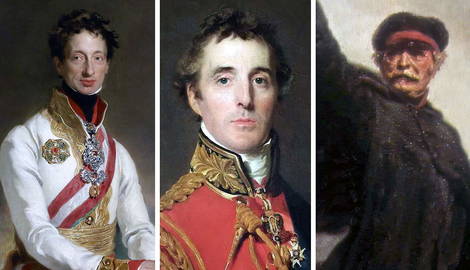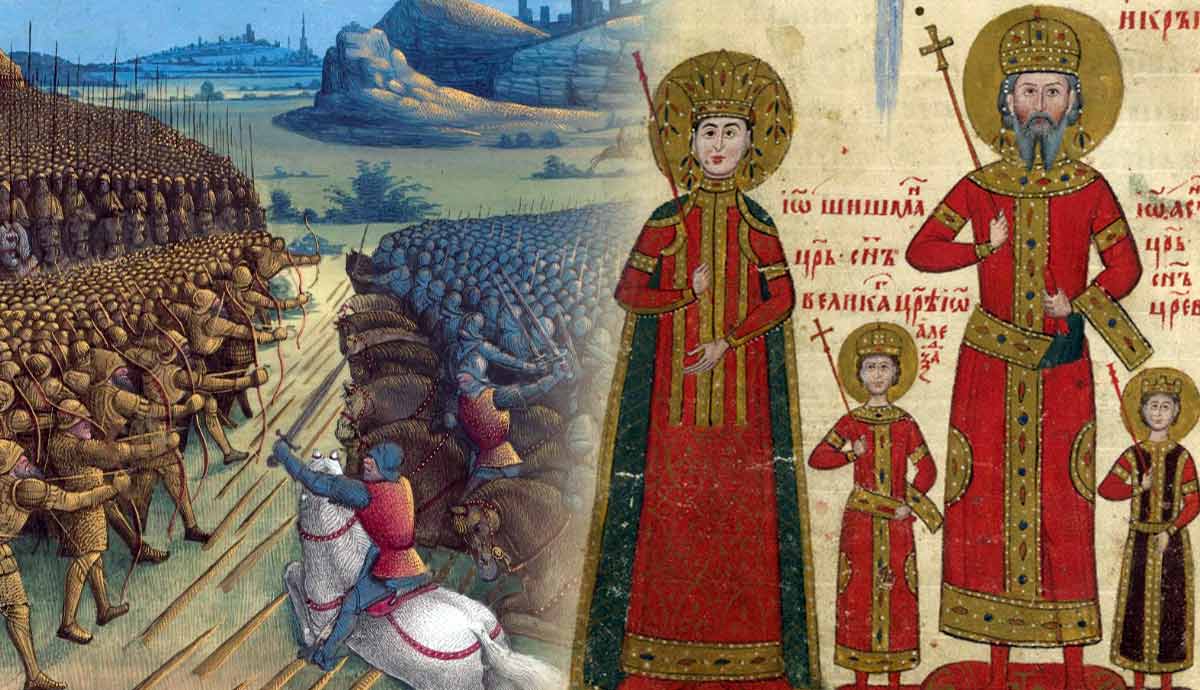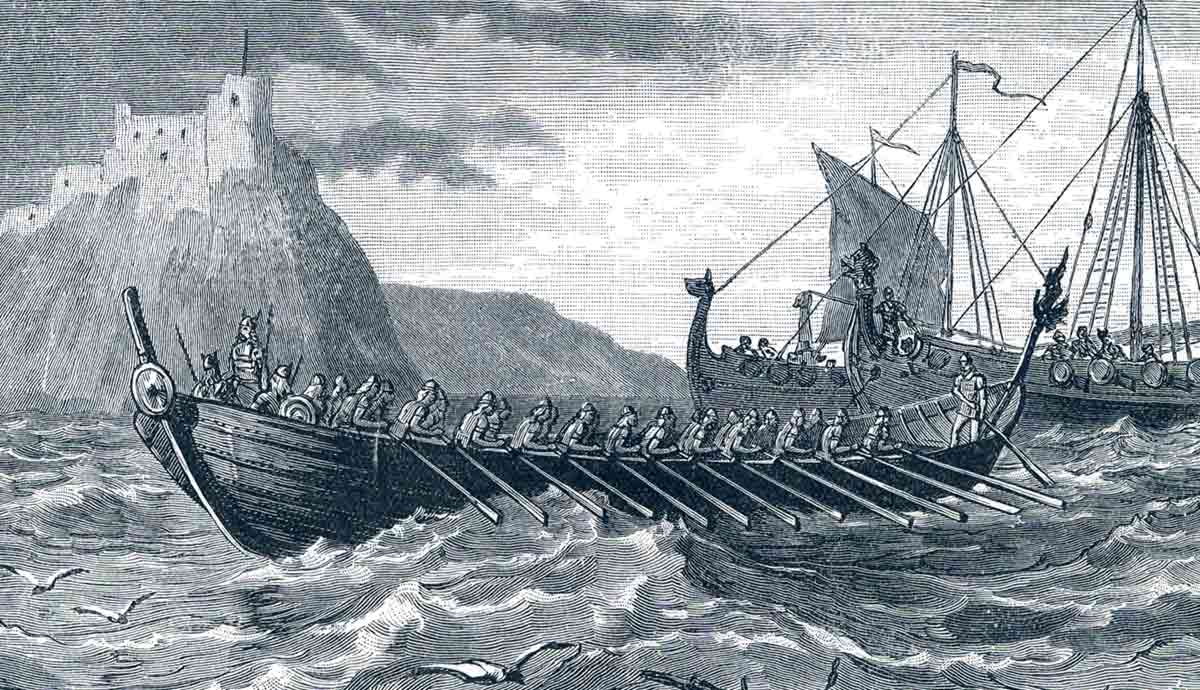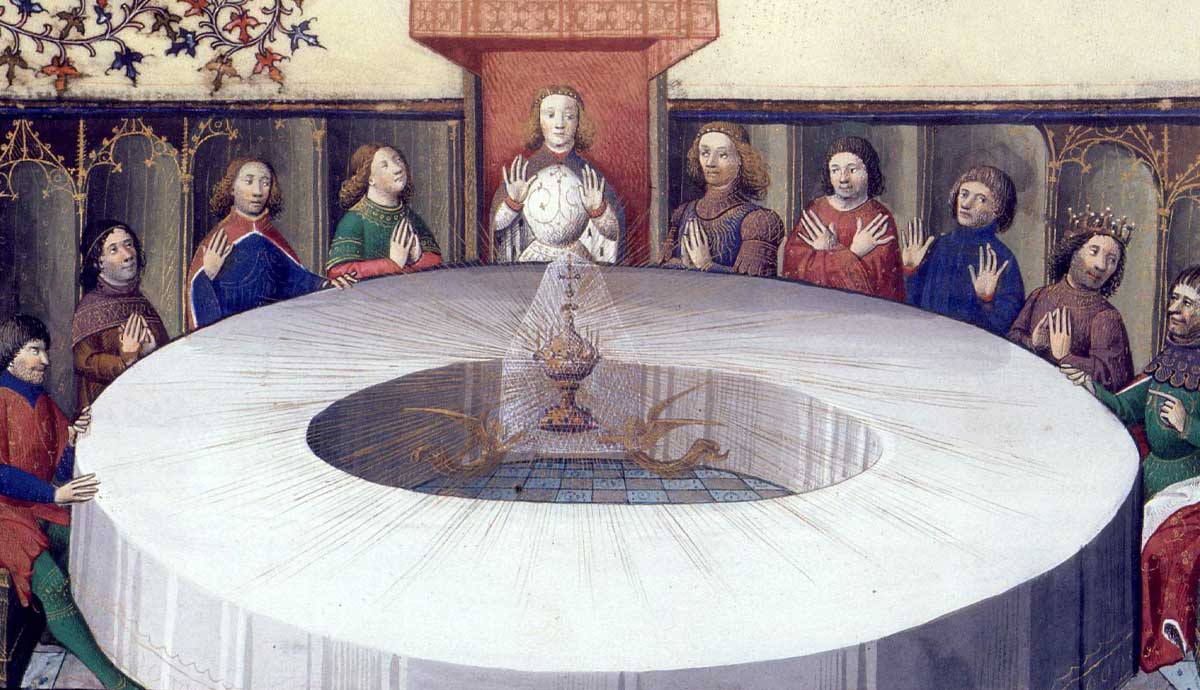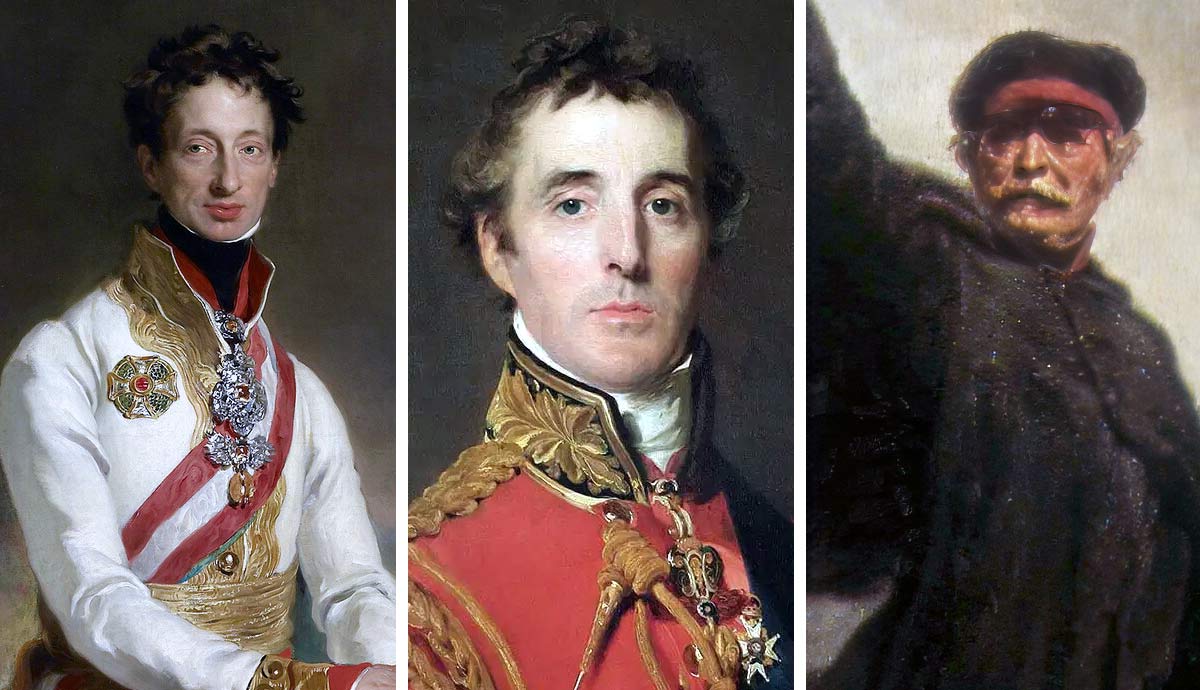
Napoleon Bonaparte is considered one of the greatest military leaders in history. As a result of his operational and tactical prowess, he suffered only ten defeats of the 80 or so battles he fought in his career. The generals who defeated him on the field of battle were accordingly some of the most accomplished military leaders of the age in their own right.
1. Archduke Charles of Austria

A member of the House of Habsburg, Archduke Charles of Austria was the younger brother of Emperor Francis I of Austria and one of the most talented Austrian generals of the Revolutionary and Napoleonic Wars. In 1796, he scored notable successes against French generals Jourdan and Moreau in the Rhine theater. In early 1797 he was appointed to command the Austrian forces defeated by Bonaparte in Italy and led a skillful withdrawal towards Vienna.
During the War of the Third Coalition in 1805, Archduke Charles commanded the main Austrian army in northern Italy. When it became clear that Napoleon’s main theater of operations was in southern Germany, Charles sought to withdraw his troops over the Alps but was continually harassed by Marshal Masséna and did not arrive in time for the fateful encounter at Austerlitz.
In 1806, Charles was appointed head of the Hofkriegsrat (Imperial War Council) and introduced reforms to improve the fighting efficiency of the Austrian army. Before these reforms were complete, Austria declared war on Napoleon in February 1809.

Although Charles had opposed the war, he commanded the Austrian army and scored some initial successes against Marshal Berthier, whom Napoleon had tasked with organizing the Army of Germany. After Napoleon arrived on the scene in April, he seized the initiative and Charles was forced to withdraw his forces along the Danube towards Vienna.
After Napoleon occupied Vienna on May 13, Charles deployed his men on the right-bank of the Danube and prepared to do battle. While the French established bridgeheads at the villages of Aspern and Essling on May 21 and were poised to break through the Austrian line the following morning, Archduke Charles personally rallied his men in a powerful counterattack that led Napoleon to admit defeat and abandon the crossing of the Danube. Charles became the first general to defeat Napoleon in battle since 1799, while the talented Marshal Lannes was mortally wounded.
Some six weeks later on July 5, Napoleon and Charles clashed for a second time at the Battle of Wagram. Fought on roughly the same battlefield as Aspern-Essling, the Austrians defended resolutely but Napoleon secured a narrow victory with heavy losses on both sides. Charles was blamed for the failure of the campaign, resigned his military offices, and went into retirement.
2. Mikhail Kutuzov

A protégé of Alexander Suvorov, Mikhail Kutuzov spent much of his military career in the late 18th century fighting the Ottoman Turks. In 1805, the 60-year-old Kutuzov commanded the Russian army that supported the Austrians in the War of the Third Coalition. After learning of Austrian general Mack’s surrender at Ulm in October, he led a fighting retreat down the Danube to preserve his manpower but was stripped of command by Tsar Alexander I on the eve of the Battle of Austerlitz, where the allied Austro-Russian army was comprehensively defeated.
Unjustly blamed by Tsar Alexander for the catastrophe at Austerlitz, Kutuzov did not see action until 1811, when he was dispatched to the Balkans with instructions to defeat the enemy and seek an advantageous peace treaty to end the ongoing Russo-Ottoman War. Kutuzov duly defeated the Ottomans at Slobozia and concluded the Treaty of Bucharest on May 28, 1812 before handing over his command to Admiral Pavel Chichagov.
Kutuzov was without a command when Napoleon invaded Russia in June 1812, but after General Mikhail Barclay de Tolly faced opposition for his policy of strategic retreat, Kutuzov was appointed supreme commander by Tsar Alexander in late August 1812. Kutuzov made a stand against Napoleon at Borodino on September 7, where both sides sustained heavy casualties after a day of inconclusive fighting. Kutuzov decided he was in no condition to continue the fight and fell back towards Moscow the following morning.
After recognizing that there was no suitable position to fight another defensive battle before Moscow, Kutuzov abandoned the old Russian capital and eventually set up camp at Tarutino. Napoleon spent six weeks in Moscow forlornly awaiting word from Tsar Alexander about peace negotiations before abandoning the city in mid-October.

As Napoleon turned south seeking to resupply his dwindling army in southern Russia, Kutuzov’s Russians intercepted him at Maloyaroslavets. With both Napoleon and Kutuzov sending reinforcements to Maloyaroslavets, control of the town passed between the French and the Russians on several occasions on October 24. While the Russian commander withdrew from Maloyaroslavets at the end of the day, he deployed his army in a formidable position to the south of the town, forcing Napoleon to abandon his southern march and turn west towards Smolensk.
Napoleon arrived at Smolensk on November 9 but quickly abandoned his intention of using it as a winter base to resume his campaign in 1813. After spending a few days resupplying his men, Napoleon left Smolensk on November 14. In the meantime, Kutuzov marched his army along a parallel route to the south and set up an ambush at Krasny on November 15.
While General Adam Ozharovsky’s small Russian vanguard was defeated, Russian general Mikhail Miloradovich led successful attacks against Viceroy Eugene de Beauharnais’ IV Corps on the 16th, and Marshal Davout’s I Corps on the 17th, during which Davout’s marshal’s baton was captured. Marshal Ney steadfastly refused to surrender to Miloradovich on November 18. Despite heavy losses, he found an alternative route and rejoined Napoleon at Orsha a few days later with a few hundred men.
At the Battle of Berezina on November 29-30, Napoleon escaped across the river with 30,000 men and evaded three Russian armies converging on the crossing point. Although some 30,000 stragglers fell into Russian captivity, Kutuzov was criticized for letting Napoleon get away. He continued to lead the Russian army in 1813 but fell ill and died at Bunzlau (now Bolesławiec, Poland) on April 28, 1813.
3. Karl Philipp von Schwarzenberg

A member of a prominent German and Bohemian aristocratic family, Karl Philipp von Schwarzenberg rose up the ranks of the Imperial army during the French Revolutionary Wars and served as a cavalry commander in the 1805 and 1809 campaigns against Napoleon. During Napoleon’s invasion of Russia in 1812, Schwarzenberg commanded a 30,000-strong contingent of Austrians in Belarus but avoided heavy action.
After Napoleon’s defeat, Russia and Prussia signed an alliance in February 1813 to liberate northern Germany from Napoleonic rule. After the Russo-Prussian army was defeated by Napoleon in May at Lützen and Bautzen in Saxony, both sides agreed to an armistice and accepted an offer of Austrian mediation. While Austrian foreign minister Klemens von Metternich negotiated with Napoleon, Schwarzenberg held talks with the allies.
After the armistice expired in August 1813 without a peace deal, the Austrians joined Russia, Prussia, and Sweden in the Sixth Coalition. Schwarzenberg was named supreme commander of the allied forces and directly commanded the Army of Bohemia, consisting of some 220,000 Austrians, Russians, and Prussians.
While Schwarzenberg was defeated by Napoleon at the Battle of Dresden on August 26-27, allied armies on other fronts were more successful in defeating Napoleon’s marshals. In October 1813, Schwarzenberg faced Napoleon at the Battle of Leipzig. Although Napoleon came close to breaking Schwarzenberg’s line to the south of Leipzig on the first day of battle, November 15, the arrival of Blücher’s Army of Silesia and Bernadotte’s Army of the North helped to defeat Napoleon. On November 18, Napoleon withdrew from Leipzig and abandoned his interests in Germany.

Schwarzenberg continued to command the allied armies in the winter campaign of 1814. Two allied armies marched on Paris, with Blücher’s column in the north and Schwarzenberg further south. When the aggressive Prussian general allowed himself to be mauled by Napoleon in early February, Schwarzenberg fell back and became more cautious.
At the urging of Tsar Alexander I of Russia and King Frederick William III of Prussia, Schwarzenberg renewed his offensive and defeated Napoleon at Bar-sur Aube near Troyes on February 27. Schwarzenberg defeated Napoleon again at nearby Arcis-sur-Aube on March 21, opening the road to Paris. Rather than retreating west towards Paris, Napoleon headed eastwards to bait Schwarzenberg into following him.
Schwarzenberg sent a cavalry screen to follow Napoleon but marched on the lightly defended French capital with his army, defeating marshals Marmont and Mortier at Fère-Champenoise on March 25 and capturing Paris on March 31. The allied occupation of Paris led to Napoleon’s first abdication and exile to Elba.
4. Gebhard Leberecht von Blücher

Born in 1742, General Blücher was among the oldest Prussian generals in active service at the turn of the 19th century. Despite his advanced age, Blücher proved a talented and aggressive cavalry general during the French Revolutionary Wars.
During the 1806 campaign against Napoleon, Blücher commanded the cavalry contingent in the Duke of Brunswick’s main army. Despite outnumbering Marshal Davout’s III Corps at the Battle of Auerstedt on October 14, Brunswick failed to break Davout’s position. The Prussian commander was mortally wounded during the battle and Blücher charged against the enemy to win time for his comrades to organize a retreat.
In the days and weeks following Auerstedt, Blücher linked up with Brunswick’s chief of staff Gerhard von Scharnhorst and gathered a force of 20,000 men who were pursued to Lübeck and forced to surrender near the Danish border on November 7. After the calamity of the 1806 campaign, Blücher supported Scharnhorst’s project to reform the army but did not play an active role in the reforms.
Blücher objected to the participation of 30,000 Prussians in Napoleon’s invasion of Russia in 1812. Following Napoleon’s defeat, he took command of the Prussian army in early 1813 and liberated northern Germany alongside the Russians. Although the allies were defeated at Lützen and Bautzen, the Prussians performed much better in battle and the determined Prussian attacks earned Blücher the nickname “Marschall Vorwärts.” Scharnhorst served as Blücher’s chief of staff in the early part of the campaign but was mortally wounded at Lützen and replaced by August von Gneisenau.

Following the summer armistice, Blücher was assigned to command the Army of Silesia, which he led to victory over Marshal Macdonald in a bitter fight at the River Katzbach on August 26. The men under his command played a major role in Napoleon’s defeat at Leipzig in November.
During the invasion of France in 1814, Blücher commanded the allied force that defeated Napoleon at the Battle of La Rothière on February 1, 1814. Blücher was encouraged by the victory to march on Paris, leaving his army vulnerable and strung-out in the process. This enabled Napoleon to launch his Six Days Campaign, an operational masterstroke that saw him defeat Blücher on four occasions between February 10 and February 15, forcing Blücher to retreat.
Despite these serious setbacks, Blücher’s army remained intact and continued to be a dangerous thorn in Napoleon’s side. After receiving reinforcements to bring his army to 100,000 men, Blücher successfully defended his position against Napoleon’s attacks at Laon on March 9-10. Napoleon abandoned his attack and turned to face Schwarzenberg, enabling Blücher to continue his march on Paris.
During Napoleon’s Hundred Days, the 72-year-old Blücher fought one last campaign against Napoleon. On June 16, the Prussians were heavily defeated at the Battle of Ligny and the veteran Prussian commander spent several hours on the field trapped under his dead horse.
After returning to headquarters, Blücher was determined to maintain contact with the Duke of Wellington’s army and promised to link up with him on the 18th. This gave Wellington the confidence to make his stand at Waterloo. While Blücher arrived on the field later than anticipated, the Prussians sealed Napoleon’s defeat and ensured a famous victory that would lead to Napoleon’s second abdication and exile on Saint Helena.
5. Arthur Wellesley, Duke of Wellington

The Napoleonic Wars was the final stage in a lengthy struggle for global hegemony between France and Great Britain during the “long 18th century.” As an island nation, Britain’s main weapon against Napoleonic France was the Royal Navy. While British armies did carry out amphibious operations in Europe during the Revolutionary and Napoleonic Wars, most of these were embarrassing failures.
The major exception was British intervention in the Peninsular War, where between 1808 and 1814 General Arthur Wellesley, later Duke of Wellington, commanded British, Portuguese, and Spanish troops to resist King Joseph, Napoleon’s elder brother who had been installed on the Spanish throne in July 1808. After liberating Portugal from French control in 1808 and 1809, Wellington successfully defended Portugal from French invasion in 1810 and 1811, and liberated Spain from Joseph’s rule in 1812 and 1813. In November 1813 Wellington crossed the Pyrenees and invaded southwestern France.
Although Wellington had defeated several of Napoleon’s marshals during the Peninsular War, he never faced Napoleon himself in battle in Spain. His opportunity came in 1815 after Napoleon escaped from his exile in Elba and was restored as emperor in Paris. In response, Britain, Prussia, Austria, and Russia each pledged to field armies of 150,000 men to defeat and overthrow Napoleon a second time.

In the spring of 1815, Wellington’s army in the Low Countries numbered around 100,000 men, of whom more than half were Belgians, Dutch, and Germans. Although Wellington complained that his multinational army was of lower quality than his Peninsular veterans, they stood up to the test after Napoleon launched his campaign into Belgium on June 14. On June 16, Wellington prevented Marshal Ney from seizing the crucial crossroads of Quatre Bras. After hearing of Blücher’s defeat at Ligny, Wellington retreated to Waterloo to maintain contact with his Prussian ally.
At Waterloo, Wellington employed the reverse slope tactic that he had used to good effect in Spain by deploying most of his men behind the ridge line at Mont-Saint-Jean, thus sheltering his forces from enemy artillery fire. Over several hours of intense fighting, Wellington’s men held on to their positions on the ridge. The British commander rode all over the battlefield rallying the men and coordinating his defenses against renewed French attacks. The arrival of Blücher’s Prussians in the late afternoon gave Wellington much-needed respite. After successfully forcing the Imperial Guard to withdraw, Wellington gave the signal for a general advance and the Allies emerged victorious.
After the battle, Wellington described Waterloo as “the nearest run thing you ever saw in your life.” Waterloo was the last battle Wellington fought in his career, though he entered politics later in life and served as Tory prime minister between 1828 and 1830.
